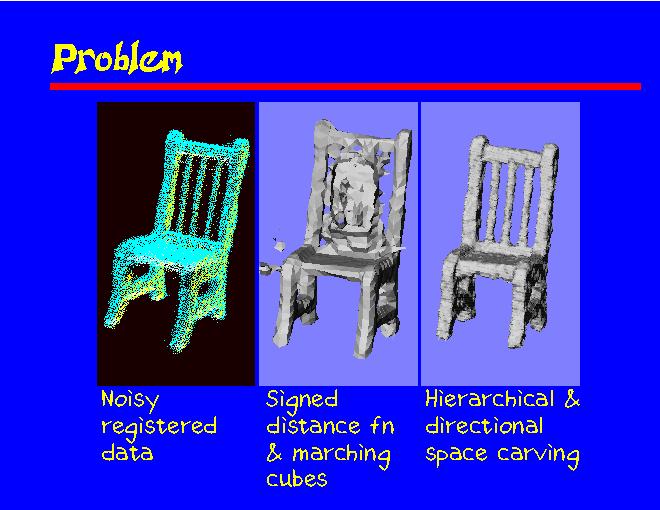Click slide for next, or goto previous, first, last slides or back to thumbnail layout.

Click slide for next, or goto previous, or back to thumbnail layout.
Click slide for next, or goto previous, first, last slides or back to thumbnail layout.

Click slide for next, or goto previous, or back to thumbnail layout.
We used to create the initial surfaces using the Hoppe etal. SIGGRAPH '92 algorithm. That method creates a signed distance function to the data, that is, a function that returns a positive value outside the object and negative inside, and extracts the zero set using the marching cubes algorithm. However, with noisy data and convoluted surface, the estimation of the signed distance function is not an easy task, and for this particular data set the results were quite bad. This motivated us to look for an alternative approach that could produce the result shown on the right. Concentrating first on volumes rather than surfaces, and explicitly using knowledge of the scanning direction, makes the new method much more robust.